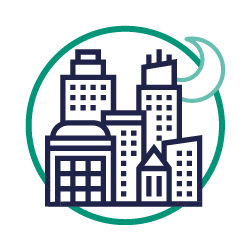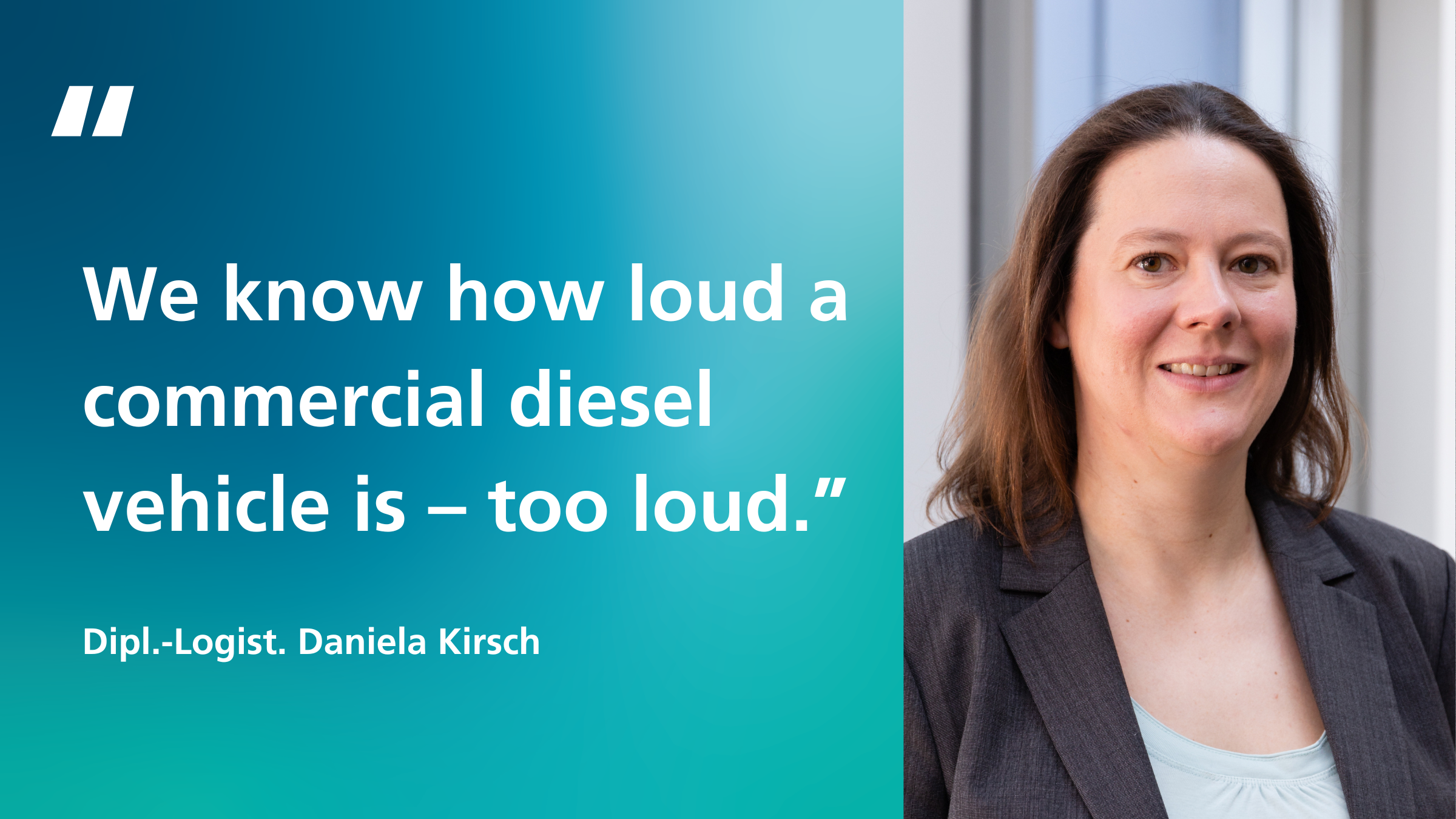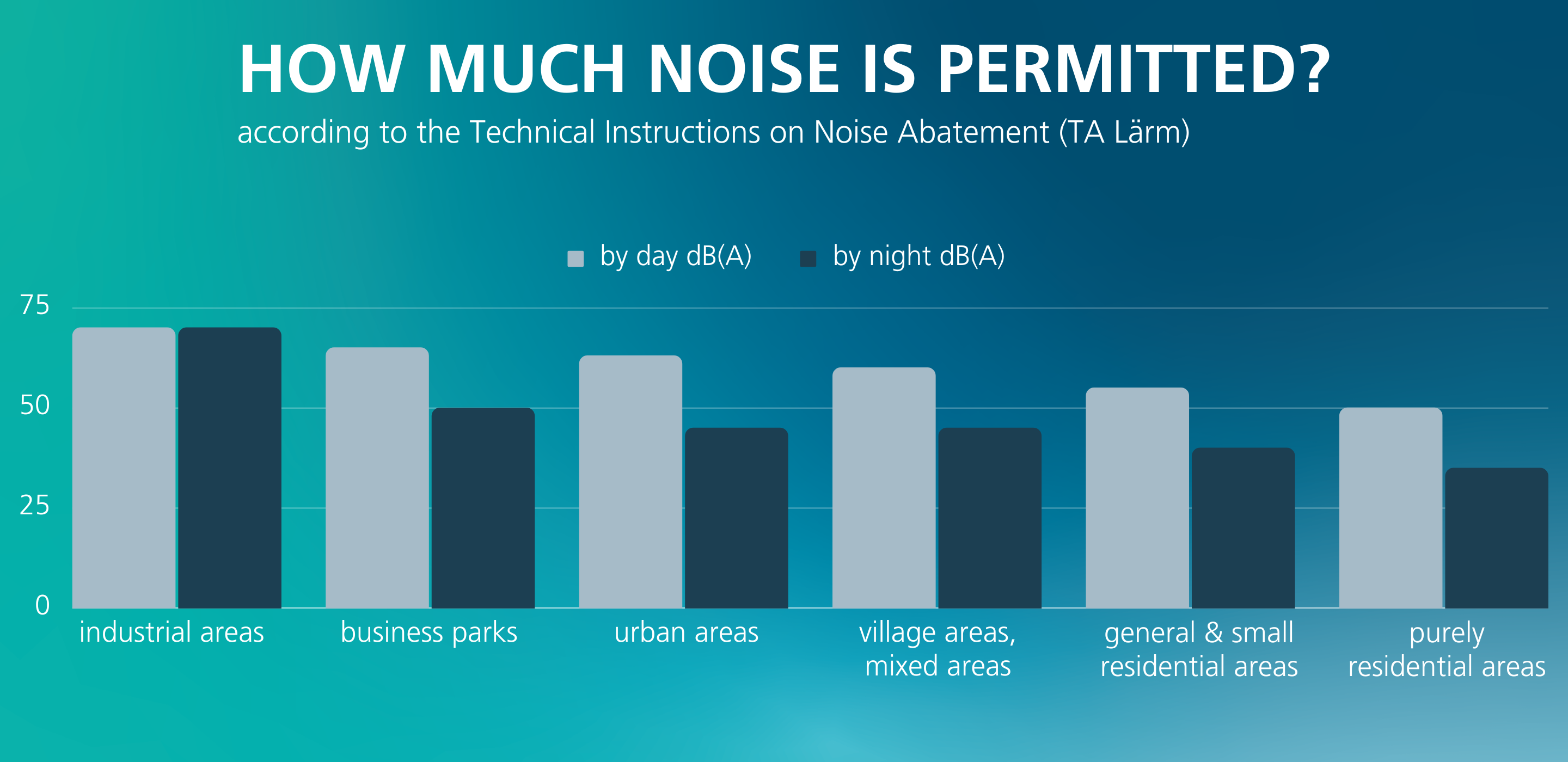Getting night logistics rolling
The best time for store deliveries is at night. Congested cities finally want to capitalize on the opportunity offered by night logistics, but there must be some way to indicate reliably whether delivery vehicles and handling equipment are quiet enough. Fraunhofer IML has published the “Quiet Logistics Guide,” which forms the basis for finally getting night logistics rolling.
In the Netherlands, manufacturers of quiet vehicles can obtain certification under the “Piek” noise protection standard, and vehicles with a “Piek badge” are allowed to drive in city centers during the night. This also makes the badge the ticket to night logistics. Night logistics is a promising concept for German cities. But Germany does not have a certificate that identifies vehicles as suitable for this type of operation. Above all, there is a lack of straightforward options available for companies to provide the necessary evidence and obtain appropriate permits. The Urban Logistics and Electric Mobility team at Fraunhofer IML is currently working on resolving this situation using the “Quiet Logistics Guide.” This work is part of a mobility study funded by the state of North Rhine Westphalia.

Run times: As different as night and day
A delivery run at night takes around 25 percent less time than during the day, when cities are gridlocked by heavy commuter traffic and public transport. This is undoubtedly more efficient and also less stressful. It means that the traffic is staggered throughout the day and more runs can be completed overall with the same number of vehicles. Since night logistics must be quiet and this is primarily achieved using electric drives, it is also associated with reductions in CO2 emissions. Between 2013 and 2017, Fraunhofer IML carried out an extensive investigation into the potential of “low-noise night logistics through the use of electromobility” in the GeNaLog project.
Research team tackles next hurdle
In the GeNaLog project, the researchers have actually shown that, technically, low-noise night logistics is possible, which complies with the decibel guideline values of the German Immission Control Act. However, they also stated: “There are still some hurdles to overcome, especially in terms of legislation and approval procedures,” emphasizes Arnd Bernsmann, who is in charge of the “Quiet Logistics Guide” project at Fraunhofer IML. This is where the guide is intended to provide municipalities and companies with assistance. To ensure that the results can be used by the municipalities and integrated into the approval processes, the law firm BBG und Partner is holding workshops with representatives of the relevant authorities as part of the project.
Statutory guidelines for noise emissions exist primarily to protect the population from the harmful effects of noise pollution on health. In specific terms, the guideline values of the Technical Instructions on Noise Abatement (TA Lärm) apply to deliveries to retail outlets in Germany. For the night-time period from 10 p.m. to 6 a.m., these values are lower than for the day, and they are lower for residential districts than for industrial and commercial areas. The TA Lärm instructions give values for the weighted sound pressure level in dB(A) (which stands for “decibels, rated with frequency filter A”). The weighted sound pressure level is based on the “ordinary” sound pressure level in dB and is intended to be a measurement of human perception of the sound.

Cities take noise protection seriously
Night deliveries in the city may only exceed 45 dB(A) at selected times. If a company wanted to deliver at night, the relevant city office is therefore interested in whether it would comply with the 45 dB(A) level in the TA Lärm instructions. “We know how loud a commercial diesel vehicle is – too loud,” says Daniela Kirsch, Team Leader Urban Logistics and Electric Mobility, “but there are no reliable measurements for electric trucks.” At this point, companies would have to compile a noise report and convince the authorities – municipality by municipality. This is not an attractive proposition for businesses, as it takes time and costs money to obtain the necessary expert opinion, in addition to the already more expensive quiet equipment.
“Quiet logistics” seal of quality
The ticket to night logistics needs to be issued in a different way. Despite its exemplary nature, the Dutch Piek certification does not go any further than this, because it still “allows” operations up to 63 dB(A). But it is nevertheless a good idea. Certification specifically for quiet logistics would create a nationwide, standardized, meaningful form of proof to present to the authorities. Cities could reward “quiet” logistics service providers with specific user benefits. This would allow the providers to plan reliably for the future. Compared to the guide, a seal of approval for quiet logistics is the “bigger hit”, as Bernsmann describes it, an objective that Fraunhofer IML is pursuing in the long term. The German Federal Ministry for Digital and Transport (BMDV) has also given this as a target in its Logistics 2030 Innovation Program.
But the introduction of a certificate for night logistics at federal level requires a lot of patience. The approach advocated by the Quiet Logistics Guide can help achieve the necessary progress in local approval processes beforehand. The project participants will design the guide in such a way that approval authorities can use it to determine the expected volume level during delivery. This is why noise emissions must be processed systematically. Typical delivery situations are simulated with vehicles of different sizes (7.5 t-40 t) and different drive types. In addition to the alternative drives powered by battery and electric motor, as well as compressed natural gas (CNG), the project team hopes to be able to include hydrogen-powered vehicles in the measurement program and is in contact with logistics service providers about this.

Listening to the entire delivery process
Working on this project means above all for the researchers: taking measurements themselves. First of all, they have defined the requirements for the measurement method, as well as logistical test cases. The Peutz Group is contributing its expertise in acoustics and noise protection to the measurement method. As an accredited measurement body for noise and vibrations, it supports the acoustic measurements.
There is far more to measure than the route traveled by selected trucks on the road. A night delivery does not end with the truck’s arrival. The process of moving and loading the goods is also particularly noisy. When vehicles are moving forward, the speed makes a difference to the noise emissions, and when they reverse, the acoustic reversing warning signal beeps. And how loud is it when the brakes are applied, the truck is idling and doors are slammed? Other relevant sources of noise on the truck are the refrigeration unit, tail lift and anti-roll protection. Not to mention the noises caused by loading equipment, such as roller containers or pallet trucks. “Basically, everything contributes to the noise,” says Bernsmann and by that he also means the flooring and the fittings at the store. Therefore, both the individual sources and the overall process involving loading and unloading need to be measured. Once the series of measurements has been completed, the next project milestone is reached.
A solution for every noise source
Trucks powered by an electric drive may be quiet enough for night logistics. There are also “low-noise” solutions for cooling units and loading equipment. Roller containers can be fitted with quiet rollers, while pallets can be moved with quiet electric pallet trucks. For some refrigeration units, a simple and ingenious technology called “geofencing” can be used: the e-truck shuts down automatically as soon as it reaches the delivery location. Ideal conditions include sound-absorbing surfaces such as whispering asphalt and damping systems for gates. The specific requirements and options depend on the store, its location and its proximity to residential areas.
Sustainable urban logistics
While night logistics should, as far as possible, go unnoticed by residents, they may well become aware of another factor: the positive effects on the environment and air pollution emissions in the city. Since e-trucks are the primary solution for night logistics, increasing night-time deliveries is an incentive for logistics service providers to use e-trucks – including during the day. From the companies’ point of view, if capacity utilization improves, it will make the use of e-trucks even more attractive. The Fraunhofer blueprint for low-noise night logistics using electric vehicles is therefore both more environmentally friendly and compatible with city life, which is why the German Federal Ministry for the Environment (BMUV) presented the GeNaLog project with its “Sustainable Urban Logistics” award in 2018.
This article was published in “discover LOGISTICS” #23, our in-house and customer magazine.
Last modified:
 Fraunhofer Institute for Material Flow and Logistics IML
Fraunhofer Institute for Material Flow and Logistics IML